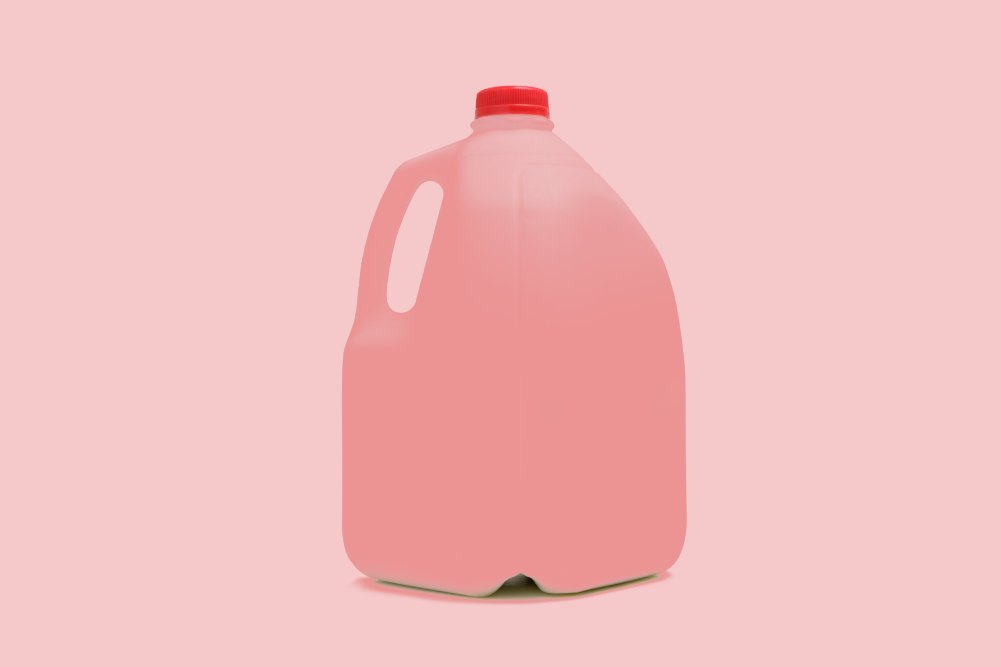College students around the country have been participating in a new drinking trend that has gained popularity through the short-form video-sharing app TikTok. Videos on the TikTok app using the hashtag BORG have received over 99.8 Million views, but what are these BORG?

What is a BORG?
BORG is an acronym for “Black Out Rage Gallon.” The process of making these customizable “party jugs” has been repeatedly detailed on TikTok, with different uses adding their own spin on the standard recipe. Typically, users start by taking a gallon-sized bottle of water and emptying out half of its contents before adding up to a fifth of vodka, squeezable water flavor enhancers (like MiO), and electrolyte powder. Finally, borgs are labeled using a permanent marker on the surface of the jug with jokey pun names like “Borganic Chemistry,” “Borgan Donor,” and “Captain Borgan.”
Why Are BORG Popular?
The concept behind the BORG became increasingly popular during the height of the Covid 19 Pandemic and the resulting lockdowns. Using these large, self-contained cocktails allowed people to take the party with them as they met outdoors or in public places instead of in bars, restaurants, or house parties.
The fact that these BORGs are intended for personal consumption and not shared was also influenced by the pandemic in that they can serve as replacements for communal kegs or “jungle juice” containers, which could presumably limit the spread of infectious diseases.
Some people also argue that this drinking style is potentially safer than other group drinking activities in that it decreases the risk of drink spiking since the BORG is designed to be sealed with a cap.
Another argument for BORGs is that a person could plan out their total alcohol intake for a night by limiting the amount of alcohol that they put in their BORG. As opposed to taking shots or drinking an endless amount of beer, if a person limited themselves to just what they had mixed in their BORG, they could pace themselves and not over-indulge.
Others tout the benefit of BORGs reducing the risk of hangovers after a night of heavy drinking because they could balance out the dehydration that occurs after consuming excessive amounts of alcohol with water and electrolytes from the flavored mix-ins added to the BORG.
Are BORG Safe?
The question of whether or not BORG are safe all depends on what exactly is in the mixture and how quickly it is consumed. As with any type of alcoholic beverage, drinking a BORG could impair a person’s judgment and lead them to make unsafe decisions.
To more thoroughly answer this question, let’s look at the components of a BORG:
Alcohol
Most medical experts would agree that drinking an entire fifth of hard alcohol during a day or night of partying is not a good idea. While the amount of alcohol present in a borg varies depending on the individual’s preference, many videos on social media platforms show people adding up to a fifth of vodka or another form of alcohol to their jug. A fifth of alcohol contains 750 milliliters, or about 25.4 fluid ounces, of liquor, which is equivalent to approximately 17 shots of alcohol.
According to the Center for Disease Control’s 2020-2025 Dietary Guidelines for Americans, it is recommended that adults of legal drinking age not drink, or drink in moderation by limiting themselves to 2 drinks or less in a day for men or 1 drink or less in a day for women. So, drinking a BORG containing a fifth of alcohol would constitute drinking about eight and a half times as much alcohol as is recommended for a healthy lifestyle.
According to the California Department of Alcoholic Beverage Control, the liver can typically process about one drink per hour. One drink of 80-proof alcohol, like the vodka typically found in a BORG, would be about 1.5 ounces. With 25.4 ounces of liquor in a fifth of hard liquor, a person would ideally space out the drinking of a single BORG over 16.9 hours.
In reality, it can be assumed that most people going to parties where BORG are consumed will go through their jug in a much more condensed time frame. This increases the likelihood that these individuals could suffer from the same negative consequences of other forms of binge drinking. The CDC defines binge drinking as consuming 5 or more drinks on occasion for men or 4 or more drinks on occasion for women. They list the consequences of binge drinking as:
- Unintentional injuries such as motor vehicle crashes, falls, burns, and alcohol poisoning.
- Violence including homicide, suicide, intimate partner violence, and sexual assault.
- Sexually transmitted diseases.
- Unintended pregnancy and poor pregnancy outcomes, including miscarriage and stillbirth.
- Fetal alcohol spectrum disorders.
- Sudden infant death syndrome.
- Chronic diseases such as high blood pressure, stroke, heart disease, and liver disease.
- Cancer of the breast (among females), liver, colon, rectum, mouth, pharynx, larynx, and esophagus.
- Memory and learning problems.
While drinking to excess is dangerous no matter what the drink container is, there are aspects of the BORG that could make it more dangerous than other types of drinking. Consuming a full fifth of hard alcohol, regardless of what it is mixed with is extreme. If a person mixes a BORG with a fifth of liquor, they may feel the need to finish the entire jug. This could encourage them to drink more than they would if they were drinking cans of beer or cups of mixed drinks.
The physics of drinking directly from a gallon jug could also play a role in overconsumption. These gallon jugs are typically fairly heavy, weighing over 8 pounds. They also have a “wide-mouth” opening (usually around 1.5 inches in diameter). Drinking directly from a heavy jug of liquor with a wide mouth could lead users to imbibe more than they intended in each sip when compared to a can of beer or a cup.
While peer pressure is everpresent in college drinking environments, the pressure to keep pace with others or to finish an entire BORG may lead people to drink past the point of intoxication and unintentionally consume too much alcohol.
To cite a recent example, on March 4th, 2023, 28 ambulances were called to the off-campus residences of the University of Massachusetts Amherst after an annual celebration led to many students drinking to excess. The Associated Press reported that “Students were observed Saturday carrying jugs with a mixture of alcohol, electrolytes, flavoring and water, dubbed “blackout rage gallons,” or “BORGs,” in a binge-drinking trend gaining traction on TikTok.” The Amherst Fire Department said none of the cases were life-threatening. However, the UMass Police reported two arrests for underage drinking.
Flavor Enhancers
Squeezable beverage flavor enhancers (like MiO) are often used to add flavor to BORGs. These enhancers typically contain natural or artificial sweeteners and synthetic food dyes. Some also contain B vitamins or caffeine. A single dose of MiO Energy, which is a popular squeezable flavor enhancer, contains 60 milligrams of caffeine. According to Healthline, each bottle of MiO contains just 1.62 ounces but provides 10–24 servings, depending on the product. If a user was to include a full bottle of caffeinated MiO in their BORG, they could be consuming 600 to 1,440 milligrams of caffeine.
While the safe amount of caffeine to consume varies depending on the individual, healthy adults can typically consume 400 milligrams of caffeine a day without harmful side effects. However, some people may be more sensitive than others to the effects of caffeine due to differences in how the body breaks down caffeine. The safe dose of caffeine for children and adolescents is still unclear, but consumption of up to 300 milligrams of caffeine daily by healthy pregnant women is unlikely to result in fetal harm.
While some people can consume more caffeine than is recommended without adverse effects, others may experience the symptoms of a caffeine overdose. According to Healthline, the symptoms of a Caffeine overdose are:
- Dizziness
- Diarrhea
- Increased Thirst
- Insomnia
- Headache
- Fever
- Irritability
- Trouble Breathing
- Vomiting
- Hallucinations
- Confusion
- Chest Pain
- Irregular Or Fast Heartbeat
- Uncontrollable Muscle Movements
- Convulsions
Ingesting a large quantity of caffeine while drinking alcohol can also mask the effects of alcohol and lead a person to drink more than they ordinarily would. According to a study published in the Journal of Studies on Alcohol and Drugs, drinkers who mix alcohol with energy drinks are more likely than drinkers who do not mix alcohol with energy drinks to report unwanted or unprotected sex, driving drunk, or riding with a driver who was intoxicated, or sustaining alcohol-related injuries.
Drink Responsibly
Despite claims that drinking BORGs is safer than traditional alcohol consumption, it’s still a dangerous practice. While a BORG typically contains a half-gallon of water, which may help reduce the signs and symptoms of alcohol hangovers, the consumption of large amounts of alcohol can still lead to a hangover, even in well-hydrated individuals. Moreover, BORGs often contain high amounts of alcohol, which can cause alcohol poisoning, even when consumed over several hours.
Frequent BORG consumption, similar to binge drinking and alcohol use disorder, may increase the risk of cancer and other chronic diseases. In addition, BORGs often contain multiple servings of flavor enhancers that may have potentially toxic levels of caffeine.
Binge drinking, which is defined as consuming four or more drinks over two hours by women or five or more drinks over two hours by men, is associated with gastrointestinal problems, alteration of the gut microbiome, and chronic damage to the brain, heart, and lungs. To reduce the risk of adverse health effects, it is typically recommended that daily alcohol consumption should not exceed one drink for women or two drinks for men.






